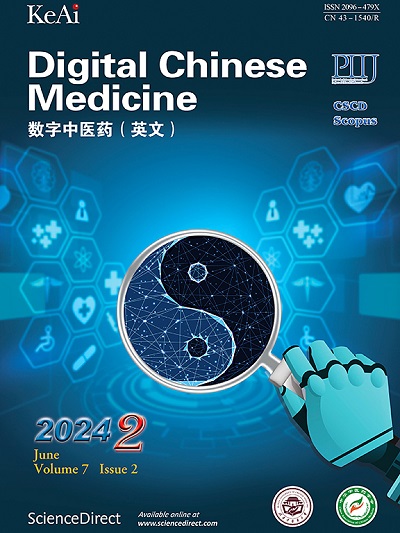2 .长读测序揭示了肠化生患者舌苔与胃粘膜之间微生物关系的改变
Q3 Medicine
引用次数: 0
摘要
目的探讨胃肠道化生(GIM)患者口腔舌苔(TC)与胃黏膜(GM)的微生物相关性。方法本研究招募1360名志愿者进行上消化道肿瘤筛查。通过长读16S rRNA基因全长测序对TC和GM的微生物群进行了分析。利用Visual Genomics软件对微生物多样性、群落结构和线性判别分析效应量(LEfSe)进行分析。采用SparCC相关分析构建共网,并通过R软件进行图形化显示。结果44例癌前GIM患者和28例快速脲酶试验(RUT)阴性、无症状慢性浅表性胃炎(CSG)的对照组。GIM患者与对照组之间TC或GM微生物群的多样性无显著差异(P >;0.05)。患者在TC和GM之间共发生41 - 60个操作分类单位(OTUs)的比例高于对照组(34.1%比25.0%)(P <;0.05)。LEfSe结果显示,胃癌患者体内富集TC型黑素普雷沃菌和3种胃幽门螺杆菌(幽门螺杆菌、幽门螺杆菌XZ274和幽门螺杆菌83)。此外,RUT阳性的GIM患者同时发生OTUs的比例低于20 (P <;0.05),胃微细杆菌、伪心菌和中根瘤菌丰度低于RUT阴性组(P <;0.05)。在GIM患者中,TC和GM之间的共生网络比对照组更为复杂。与RUT阴性的GIM患者相比,RUT阳性的患者TC和GM之间的细菌相关性更强。最后,RUT阴性患者血清PG-I/II比值与3种胃幽门螺杆菌(幽门螺杆菌、幽门螺杆菌XZ274和幽门螺杆菌83)呈负相关(P <;0.05),与两个TC种(核梭杆菌亚种;RUT阳性患者的核状体和弯曲杆菌(P <;0.05)。结论GIM的发展增强了口服TC与GM之间的共生网络,为TC与胃之间的相关性提供了微生物证据。本文章由计算机程序翻译,如有差异,请以英文原文为准。
2Long-read sequencing revealed alterations of microbial relationship between tongue coating and gastric mucosa in patients with gastric intestinal metaplasia
Objective
To explore the microbial correlation between oral tongue coating (TC) and gastric mucosa (GM) in patients with gastric intestinal metaplasia (GIM).
Methods
The present study recruited 1360 volunteers for upper gastrointestinal cancer screening. The microbiota in TC and GM were profiled by long-read sequencing of full-length 16S rRNA gene. The microbial diversity, community structure, and linear discriminant analysis effect size (LEfSe) were analyzed by the software Visual Genomics. SparCC correlation analysis was used to construct the commensal network and the graphical display was conducted by R software.
Results
The population included 44 patients with precancerous GIM, and 28 matched controls with negative rapid urease test (RUT) and non-symptomatic chronic superficial gastritis (CSG). No significant difference in diversity was observed between GIM patients and controls in TC or GM microbiota (P > 0.05). Patients had a higher percentage of 41 – 60 co-occurring operational taxonomic units (OTUs) between TC and GM than controls (34.1 % vs. 25.0 %) (P < 0.05). The LEfSe showed that TC Prevotella melaninogenica and three gastric Helicobacter species (i.e., Helicobacter pylori, Helicobacter pylori XZ274, and Helicobacter pylori 83) were enriched in patients with GIM. Furthermore, GIM patients with positive RUT had a lower percentage of co-occurring OTUs over 20 (P < 0.05), and lower abundances of gastric Veillonella, Pseudonocardia, and Mesorhizobium than those with negative RUT (P < 0.05). The commensal network between TC and GM was more complex in GIM patients than in controls. GIM patients with positive RUT demonstrated more bacterial correlations between TC and GM than those with negative RUT. Finally, the serum ratio of PG-I/II was negatively correlated with three gastric Helicobacter species (Helicobacter pylori, Helicobacter pylori XZ274, and Helicobacter pylori 83) in patients with negative RUT (P < 0.05), and negatively correlated with two TC species (Fusobacterium nucleatum subsp. nucleatum and Campylobacter showae) in patients with positive RUT (P < 0.05).
Conclusion
The development of GIM potentiated the commensal network between oral TC and GM, providing microbial evidence of the correlation between TC and the stomach.
求助全文
通过发布文献求助,成功后即可免费获取论文全文。
去求助
来源期刊

Digital Chinese Medicine
Medicine-Complementary and Alternative Medicine
CiteScore
1.80
自引率
0.00%
发文量
126
审稿时长
63 days
期刊介绍:
 求助内容:
求助内容: 应助结果提醒方式:
应助结果提醒方式:


